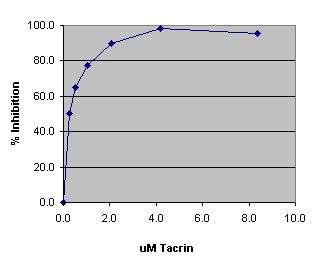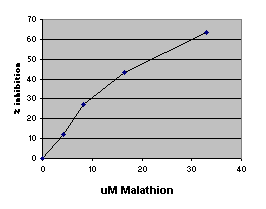GENTAUR - Research solutions for the academic, biotechnology and pharmaceutical industries
aCella™ - AChE |
||||||||||||
| Key Benefits: | ||||||||||||
|
||||||||||||
| Introduction to aCella - AChE | ||||||||||||
Acetylcholinesterase (AChE) is one of the most important enzymes involved in nerve transmission. The enzyme is bound to cellular membranes of excitable tissue (synaptic junction, endoplasmic reticulum, etc)1-3. Acute toxicity to humans and animals through inhibition of AChE by both nerve gases and an important class of pesticides has long been a field of intensive scientific investigation 4,5. AChE inhibitors have also been used clinically as Alzheimer’s treatments (e.g., tacrine (tetrahydroaminoacridine)) (6) and are the subject of increasing interest in various disease processes and treatment strategies 7,8. However, both environmental detection of AChE inhibitors and development of modulators of AChE enzymatic activity as drugs have been hampered by the difficulty and complexity of the current assay methods. |
||||||||||||
| Assay Principle: | ||||||||||||
We have developed a highly sensitive, very rapid, extremely simple assay for AChE activity, using the natural substrate, acetylcholine. As shown in Figure 1, a series of coupled enzyme reactions quickly translates the presence of active AChE into a change in the luminance of the reaction. First (reaction I), acetylcholine is hydrolyzed by the AChE to yield acetate and choline. The acetate and choline then enter a coupled enzyme reaction (reaction II) that results in consumption of ATP, and finally the ATP concentration is measured by the well-established luciferase method (reaction III). These reactions can occur simultaneously, and the result is generally obtained in five minutes or less. Inhibitors of AChE are readily detected by an increase in luminance due to reduced consumption of ATP. |
||||||||||||
| Reaction I: AChE + Inhibitor |
||||||||||||
| Reaction II: Coupled Enzyme Reaction + ATP |
||||||||||||
| Reaction III: ATP (remaining) + Luciferase/Luciferin |
||||||||||||


|












